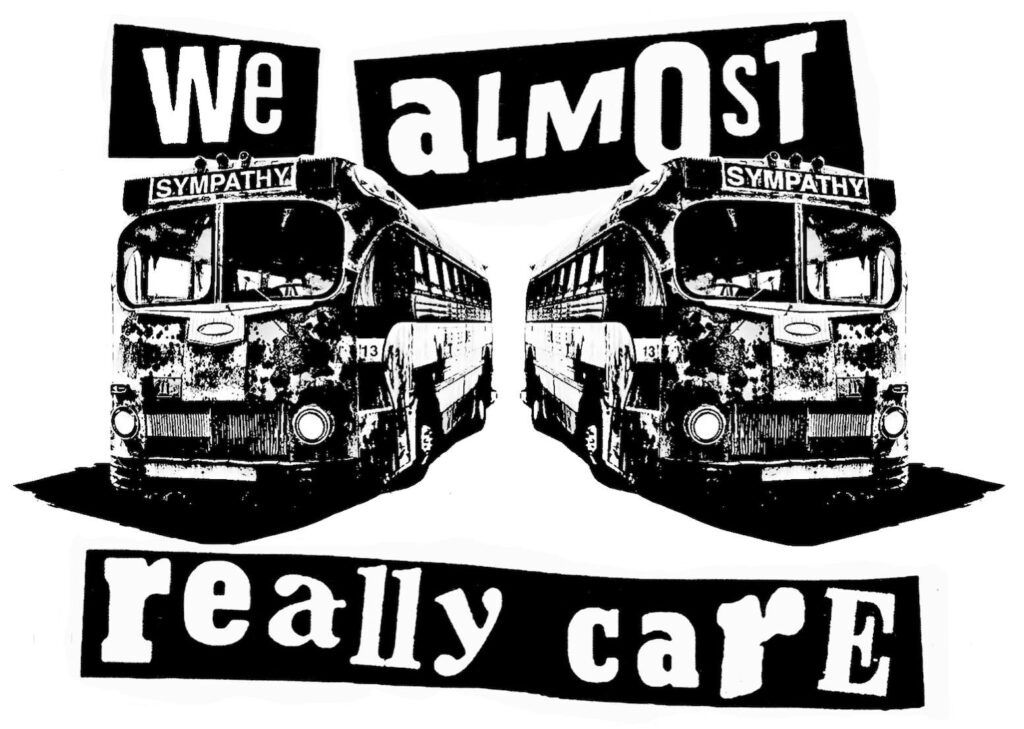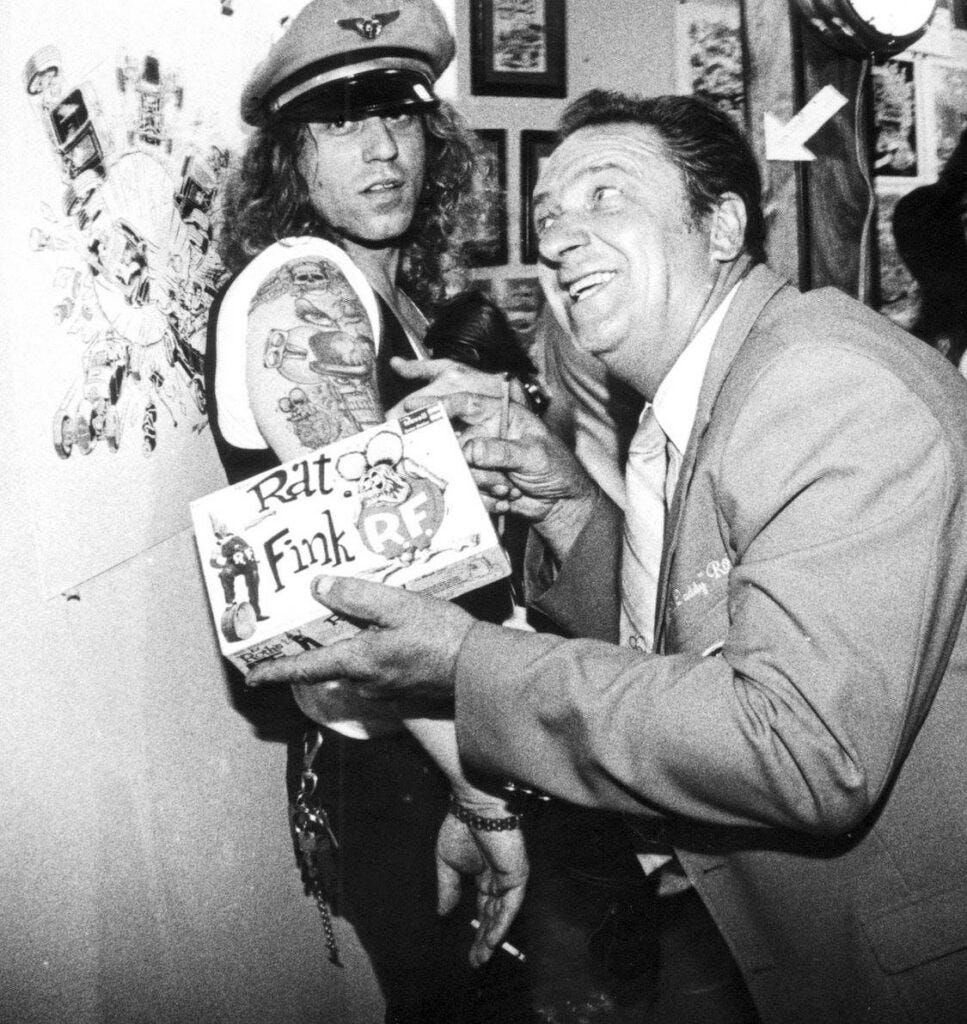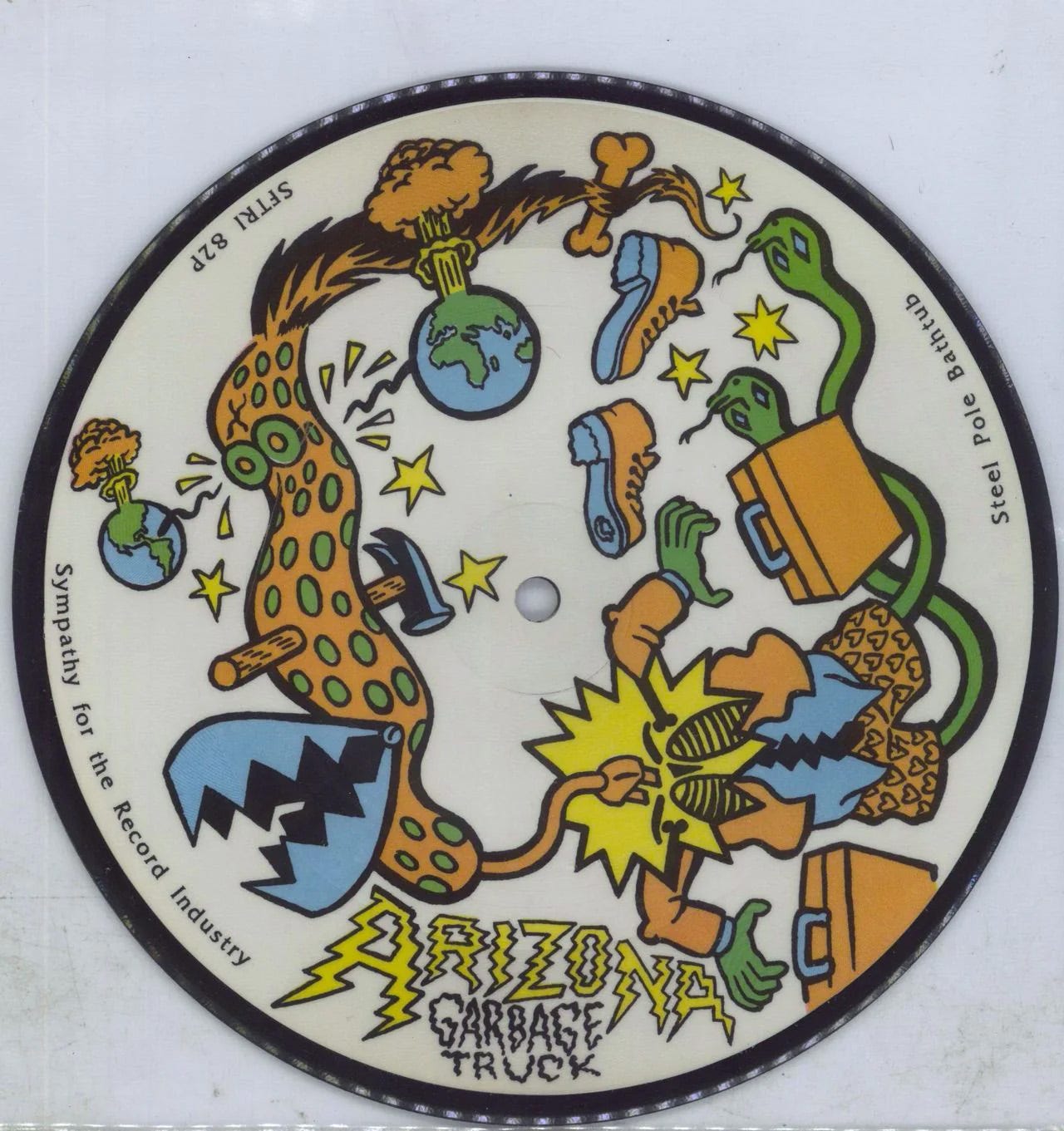Trading Llamas for Sympathy: John Reis (RFTC, Hot Snakes) and Sympathy for the Record Industry • DJ Krush and Boredoms • 'Hello Nasty' at 25
Discussed: 'The Treasures of Long Gone John,' White Stripes, Mark Ryden, Red Aunts, Rocket from the Crypt, 'Hello Nasty' at 25, Melvins, Peruvian llamas, A-1 Sauce, MySpace, Boredoms!
A lot of my writing for LA Weekly, where I was music editor from 2007-2010, was pretty ephemeral: quick blurbs for upcoming shows, blog posts reacting to LA music news of the day and the like. That stands to reason. I was new to town and relied on – or brought on – established or ascendent LA chroniclers including Falling James, Jonny Whiteside, Jeff Weiss, Nikki Darling, John Payne, Ian Cohen, Jessica Hopper, Drew Tewksbury, Chris Martins and Daiana Feuer. I was hired to assign and edit, not to write.
But I had to write because apparently that’s what I do. What follows is one of my first decent stories for LA Weekly, which in ‘07 was still publishing a 160-page (!) print edition every Thursday. In future Yard Sales I’ll be publishing a few other features that turned out well, including my long-read travel piece on Ozomatli, the US State Dept., Myanmar and cultural diplomacy, “On the Road to Burma”; and “You Are Mutato,” a long feature on Mark Mothersbaugh’s West Hollywood musical haven, Mutato Musika.
Below, a wild ride featuring a pack of Llamas, a music freak named Long Gone John, the founder of explosive San Diego band Rocket from the Crypt and an out-of-the-blue MySpace post from ‘07.
Note: to make this less dated, I’ve updated some tenses without sacrificing any meaning. I’ve also added/updated sentences here and there to include stuff that has occurred in the years since this published.
Talk to Long Gone John about his early days as an entrepreneur, and you’re left with a single, indelible image, one that truly embodies the man’s DIY ethic: It’s of the longtime owner of the Long Beach–based record label Sympathy for the Record Industry standing beside a steaming cauldron of melted vinyl pellets. Like a silversmith plying molten metals, John used to hand-mix colors in order to create new hues for each of the 45s put out on his influential indie imprint. Bubblegum pink. Springtime green. Hearty burgundy.
“It’s like this big fucking cement mixer that you pour these colored pellets into,” said John, who looks like a character from Deadwood and tosses f-bombs with equal aplomb. “They swirl around, and then it goes to something called an extruder, which spits it all out like you’re squeezing a fucking tube of toothpaste.” The puck of vinyl is then squished to the width of a crepe and imprinted with the grooves that hold the music. The end result, festooned with a label, is a shiny new 7-inch that looks like something Willy Wonka might have made.
“I was really into this mode of creating,” added Long Gone (real name: John Edward Mermis), whose passions and quirks are supremely Wonkian. “It’s easy to make rare records. All you have to do is make pressings smaller than the demand.” (Note: This was waaaay before the current colored vinyl fad; Sympathy, in fact, was a pioneer in the field of tripped-out color pressings.)
But of course there’s more to it than that. To do things the Sympathy way, you need an exquisite eye for cover art and a passion for American culture in all its backwater glory. You need to be an obsessive in the mold of Henry Darger, Walt Whitman, Ed Wood Jr. and that dude who rolled the boulder-size ball of twine on a farm in Kansas. And, above all, you need to be consumed by rock & roll.
“I’ve been offered kidneys, lungs and a lifetime live-in French-maid service. I’d probably trade for a massive Victorian pump organ or a habitable castle overlooking the coast in Swansea, Wales. — Long Gone John
Long Gone John used to be obsessed with releasing rock & roll records, and he’s got the catalog to prove it: approximately 750 releases by 550 bands, each a dirt-rock nugget from a forsaken garage somewhere on the globe. The label released the first three White Stripes albums and a couple singles, as well as early tracks from Hole, Bad Religion, Rocket From the Crypt, the Melvins, Turbonegro, the Detroit Cobras and hundreds of others. The 5,6,7,8’s from Japan. The Scientists from Australia. Tav Falco from Memphis.
In addition to his legit label releases, Long Gone was also reputed to be the man behind a plethora of dubiously sourced, seemingly artist-sanctioned — but certainly not major-label-sanctioned — bootleg 7-inch releases from Sonic Youth, Nirvana and Hole.
One of the label’s many funny slogans has rung true since the beginning: “Sympathy for the Record Industry: We just don’t know when to give up.”
At least they didn’t know how to give up. In 2007, Long Gone John, partly as a lark, partly because he was curious, but mainly because he didn’t want to do it anymore, posted a message on his MySpace page. In typically irreverent and witty script, he stuck a sign in the label’s front yard. “FOR SALE,” read the message. “Preeminent Independent Record Label.”
What followed was a sales pitch worthy of QVC. He listed the label’s heavy hitters, his exquisite taste in reissues — Roky Erikson, the New York Dolls, the Gun Club, Spacemen 3, Suicide. He continued: “[A]nd let’s not forget the serious concentration on a plethora (like that word??) of bands in hot beds such as Memphis, Detroit and Montreal and also being among the first to look towards the Far East to unleash the demented and curious off-kilter sounds ...”
Then he ran through the company’s assets, which included: “questionable/nebulous rights to nearly 750 releases by over 550 bands”; all the master tapes; national and international distribution; existing stock “modestly estimated at a wholesale value of 1.8 millon dollars”; cover layouts and original artwork; an established Web site with “a vastly lucrative mail order business.” He even offered to throw in “over 30 snappy sarcastic slogans,” including, “We almost really care,” “You’ve tried the rest now go f*ck yourself” and “A name you can pronounce since 1988.”
The asking price? “$625,000.00 or $700,000.00 if i don’t like you.”
To Sympathy observers, the move was a small shock, but not an earthquake. Six months prior, the Los Angeles native had relocated his home and label to Olympia, Washington. (Sixteen years later he’s fully settled in.) That in itself was a Sisyphean undertaking, because Long Gone John isn’t just obsessive about music. He’s obsessive about an insanely wide array of things. He collects Americana figurines and comic-inspired art, and has carefully arranged it on every flat — and curvy, and angled — surface in his home.
“I have a pack of llamas. It’s a really special breed: They’re the Chacoan llamas, which were llamas for the royalty of Peru. I have about 30 of them, and I was going to trade him those. He has tons of room, and each of these are worth about $30,000 a piece.”
— John Reis (Rocket from the Crypt, Hot Snakes)
His accumulation is incredible — he owns the leather jacket Iggy Pop wore on the back of Raw Power, and an original Ed Wood script for Plan 9 From Outer Space and Sid Vicious’s gold record from Never Mind the Bollocks — and his prescience impeccable. He started buying Robert Williams’ work when it wasn’t hip to do so, and commissioned art — both paintings and record covers — from some of the country’s foremost comic and comic-inspired artists, including Koop, Mark Ryden, Todd Schorr and Marion Peck. His collection is highlighted in the Gregg Gibbs documentary The Treasures of Long Gone John. [You can watch it below.]
When he announced his move, Long Gone John assured the curious that Sympathy for the Record Industry would continue to operate. But he admitted to me that he’d been quietly considering the auction block. “This isn’t a new thought. I’ve thought about it for a while. I just never made a move.” He composed his sales pitch about six months ago, he says, as “a tongue-in-cheek thing that I thought I’d toss up on eBay for fun. But I never did. And then the other day I discovered it again, and I thought, ‘Well, I’ll put it on my MySpace page.’ ”
Within hours of posting it, the information had wended its way around the Internet, and the phone calls started coming. He says that so far he’s received many queries, a few of which he considers “serious,” though he declines to provide names.
One man who was very interested was John Reis, a.k.a. Speedo, the lead singer of, among other bands, Rocket From the Crypt and Hot Snakes. Reis’ label, Swami Records, trades in a similar aesthetic as Sympathy; and Rocket From the Crypt released a handful of records on Long Gone John’s label.
Reis confirmed to me that he’d made an offer. “We’re talking about some noncash reimbursements — trade — and he’s entertaining my offer right now.” And, in typical Sympathy fashion, the offer at first glance sounded too ridiculous to take seriously.
Reis elaborated: “I have a pack of llamas. It’s a really special breed: They’re the Chacoan llamas, which were llamas for the royalty of Peru. I have about 30 of them, and I was going to trade him those. He has tons of room, and each of these are worth about $30,000 a piece.” Reis’ family breeds llamas, he told me, and enters them in competitions. “It’s kinda like the 4H Club of the international aristocracy and elite.” Combined, the value of the llamas he’s offering for the label is $600,000. But, Reis explained, “the one concern is just keeping these things alive in the climate of the Northwest.” He acknowledged that John might have to have some sort of “biodome thing built.”
Such was Long Gone John’s world. But this whimsical land had a few very unwhimsical problems as well. For anyone who has ever been in a band or in the biz, Long Gone John’s list of assets contained one gigantic red flag: “questionable/nebulous rights to nearly 750 releases by over 550 bands.” Translated: Sympathy operated for the past 19 years without signing those pesky things called contracts. Any new owner potentially would have had to negotiate with 550 different bands in order to keep the catalog intact.
The owner acknowledged these concerns even as he brushed them aside. “I’m being completely up-front,” he insisted. “Anybody that really knows anything about Sympathy knows that 90 percent of the time everything was done on a handshake deal. That doesn’t fucking nullify everything that I’ve done. I have no contracts. I continue to function every day and nobody gives a shit. So if it changes hands, why do people expect that it means that immediately the whole thing falls apart? I don’t get it.”
Long Gone said that the label “brings in a shitload of money consistently every month,” but that individually, none of his releases were hot sellers. It’s the body of work as a whole that had value. “Individually nobody is really generating enough money to even talk about. But all together it amounts to something.”
Assessed Reis, who did sign a contract with Sympathy before the label put out the Rocket From the Crypt titles: “I think it’s the finest record label in existence, and I think that although its value might not be right now what it once was — just in terms of CD and record sales in general — I think it’s just a matter of time before Sympathy will find an audience. I think a lot of those are classic records and artifacts from a time and place that can never be re-created.”
Reis wasn’t concerned with the rights to the music, and thought that if a kindred spirit — like himself — bought the label, bands would have come out on top. “And maybe if bands see that there’s no big money changing hands — just livestock — and it’s someone basically from that same subculture that’s taking the reins, maybe they won’t come to me saying, ‘You’re this guy with this suit that has a lot of money and we want our cut if we’re going to stay on Sympathy.’?”
Realistically, Reis harbored little hope that John would accept his offer, though John did like the llamas. And as far as compensating the bands after a sale, Reis said he had a plan for that too: He’d offer bands part ownership of a llama. “Maybe [approach], like, the Red Aunts, the Child Molesters or Clawhammer and say, ‘You guys get this llama, and any of the revenues that it generates will end up split between the three bands.’?”
“I guess I’m considering it,” confirmed Long Gone John, adding that he preferred trading for miniature horses. So far, he said, “I’ve been offered kidneys, lungs and a lifetime live-in French-maid service. I’d probably trade for a massive Victorian pump organ or a habitable castle overlooking the coast in Swansea, Wales. I’d also consider a real shrunken head and an unending supply of gummi bears and A-1 Sauce. I’m a simple man.”
If you’ve made it this far, perhaps you’re curious enough to enjoy this feature-length documentary on Mr. Gone John: The Treasures of Long Gone John.
The Best Thing That Pitchfork Ever Did.
Digging in the CMJs: Your Host 25 Years Ago
Old school indeed.
Entering the collection: The Boredoms remixed by DJ Krush
The third volume of a Boredoms remix project called Rebore, DJ Krush’s epic 45-minute megamix of sounds, tracks, samples and tidbits from throughout the Japanese experimental legends’ oeuvre is a psychedelic downtempo freakout. The first two volumes featured, respectively, trip hop master U.N.K.L.E. (James Lavelle) and Japanese acid house and techno producer Ken Ishii. Those, too, are single-track megamixes that extend about 45 minutes on the CD version and an evenly divided 22+ minutes on the vinyl versions.
Each is a beast in its own way – Ishii’s runs at a faster tempo and Lavelle’s at a slower, funkier pace – but Krush’s hypnotic, rhythmic experimentation will trap you in a sonic K-hole. Be careful when approaching the fourth volume, the truly magnificent Rebore Vol. 0. It’s remixed by the Boredoms’ cofounder EYE, and those not fully prepared might descend into an aural-psychic-surreal abyss they’ll never fully recover from. None are available on streaming services. Find hard copies pronto.
This originally appeared at In Sheep’s Clothing, where I help curate their collection, content and programming. Each day we enter another brilliant work into ISC’s online collection.













